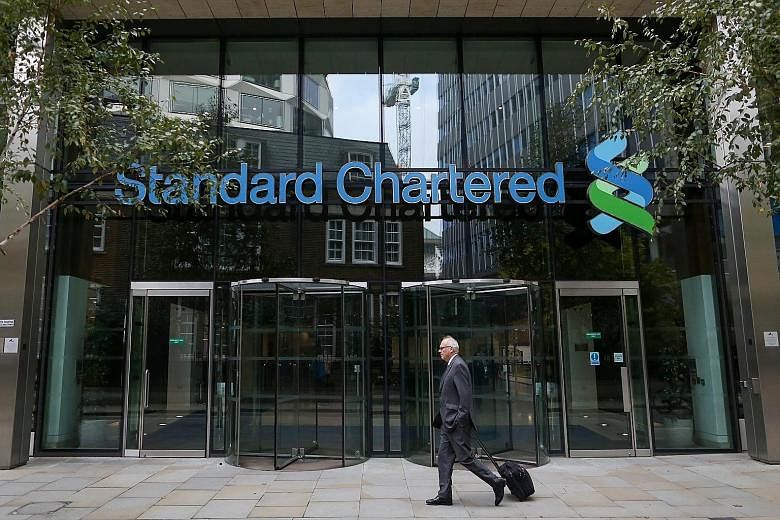LONDON • As China's growth sputters, the troubles at Standard Chartered are another bad omen for what were once Asian economic darlings.
The bank, which generates most of its income in Asia, had gambled on success in emerging markets like India, which instead saddled the lender with delinquent loans.
As a result, the company is now axing 15,000 jobs and is being forced to ask investors for US$5.1 billion (S$7.1 billion).
StanChart "are Asian specialists and are in all the main markets in the region, so in looking at them you can get a good sense for credit direction and lending appetite", said Mr Mark Holman, chief executive officer at TwentyFour Asset Management in London, which oversees £5 billion (S$10.8 billion).
For now, there are still fewer corporate debt defaults in Asian economies than in other developing countries, but rising leverage from India to Indonesia points to the risk of further non-payments. More stringent conditions from banks like StanChart are slowing loan growth in the region, exposing more fissures in the corporate credit market.
"The picture that emerges is that Asian credit cycles are far more advanced than those in Europe and loan losses and impairment charges are mounting," Mr Holman said.

Like firms in other developing nations worldwide, Asian companies took advantage of low interest rates to go on a borrowing binge.
The move is backfiring as slower economic growth makes it more difficult to pay back the obligations.
Fitch Ratings warned on Monday that 11 per cent of India's loans will fall into the category of "stressed assets" in the fiscal year ending in March 2016 and will improve only "marginally" the next year.
In China, Sinosteel, a state-owned steelmaker, missed an interest payment last month, becoming the latest firm teetering on the verge of default.
While they are still posting positive returns, dollar-denominated bonds sold by Asian companies are trailing their emerging-market peers for the first time since 2012.
The bonds returned 2.8 per cent this year, compared with the 3.2 per cent average gain in emerging markets, according to data compiled by JPMorgan Chase & Co.
To be fair, StanChart created its own problems. Under former chief executive Peter Sands, the bank relaxed lending standards to expand across emerging markets.
Rival HSBC Holdings, whose earnings are also mostly in Asia, made no such bet and beat analyst estimates to report a 32 per cent rise in third-quarter pretax profit.
Only one Asian company - Indonesian coal miner PT Berau Coal Energy - defaulted this year, compared with seven in Latin America and nine in Eastern Europe and the Middle East, according to Standard & Poor's Global Fixed Income Research Group.
"The rapid credit growth in Asia raises some concern, and people are definitely mindful of the credit growth in China," Mr Steve Hooker, a money manager at Newfleet in Hartford, Connecticut, who helps oversee about US$12.5 billion of debt, said by phone.
With banks retreating, lending is drying up. Strip out Japan, loans in Asia plunged 25 per cent this year to US$259 billion, according to data compiled by Bloomberg.
Fortress Investment Group warned investors in September that the "contraction of credit" among developing countries would deepen a sell-off that could rival the Asian financial crisis of 1997.
BLOOMBERG

